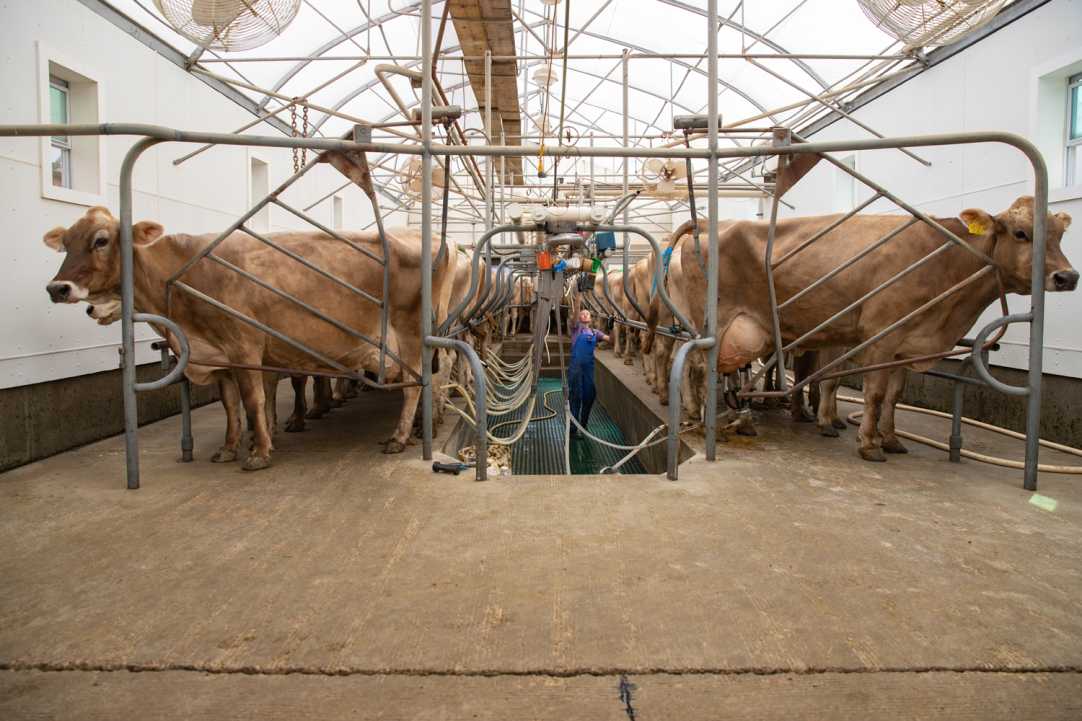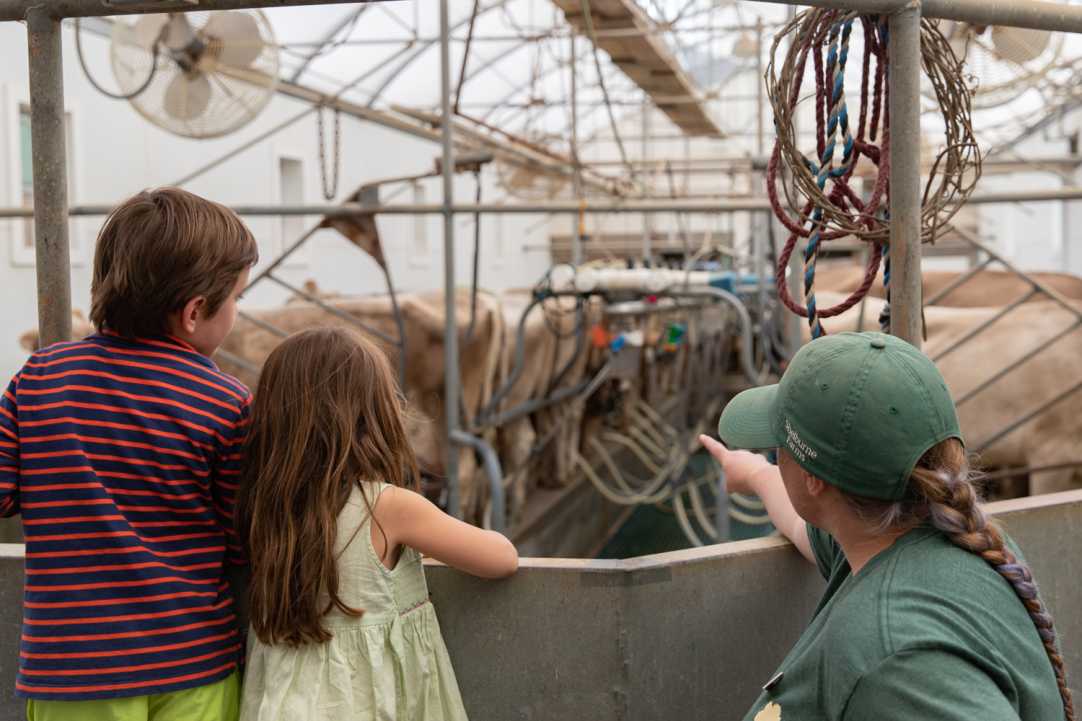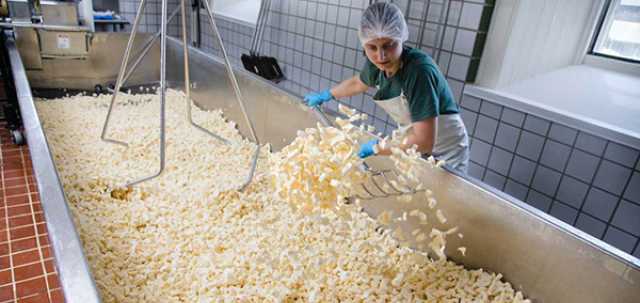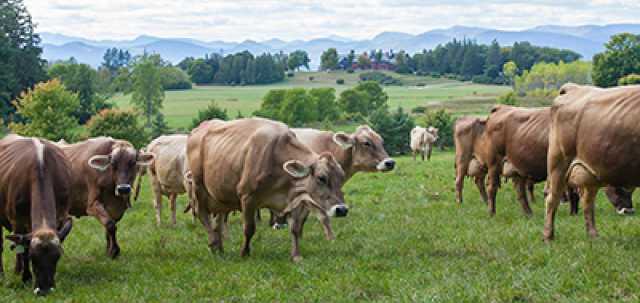This was awesome!
24 Hours at the Dairy
Our dairy team works every day to make high quality milk from healthy cows raised on pasture. See just some of what they do from pre-dawn to dusk to achieve that goal, and to share the world of dairy farming with others.

4:45 am Renee is already milking. She lines up 12 cows on a side, cleans their teats with an iodine dip, then attaches the cups. Country music radio twangs, occasionally in rhythm to the pulse of the milk pump. The station helps Renee track her progress. “At 6am every morning, they play the National Anthem,” she explains. “I know I should be on my fifth set of cows by then.” She urges cows into position, “Move along… Come on...” and the cows respond. They’re used to the routine, and to Renee, who knows each by name. There’s Ethel: “She’s my special cow,” Renee says. And Cayenne: “She doesn’t like being next to the gate.” Petunia: “Her mom was Daisy, my favorite cow.” And Faith: “Everyone in her family poops in the parlor—her mother, her sister, her grandmother. It’s a family tradition.” On to the next set. 110 cows total.
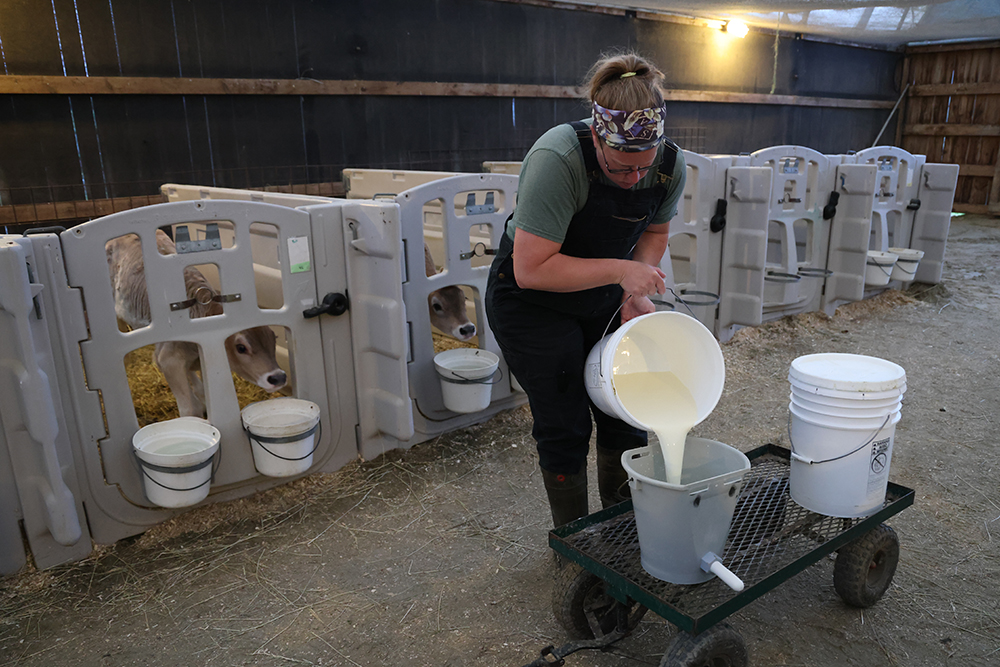
5:15 am While Renee milks, Megan tends to calf chores. A dozen calves are currently in the calf barn, including two bulls destined for a 4H family looking for an oxen pair. One more calf, born overnight, is still in the maternity barn with his mom Averil. Megan hops into the pen with one calf to encourage it to nurse from the nursing bucket. “She’s just off the bottle yesterday, so she’s not used to it,” Megan explains. “The milk flows faster from the bucket teats.” With Megan’s attention, the calf adjusts in no time.
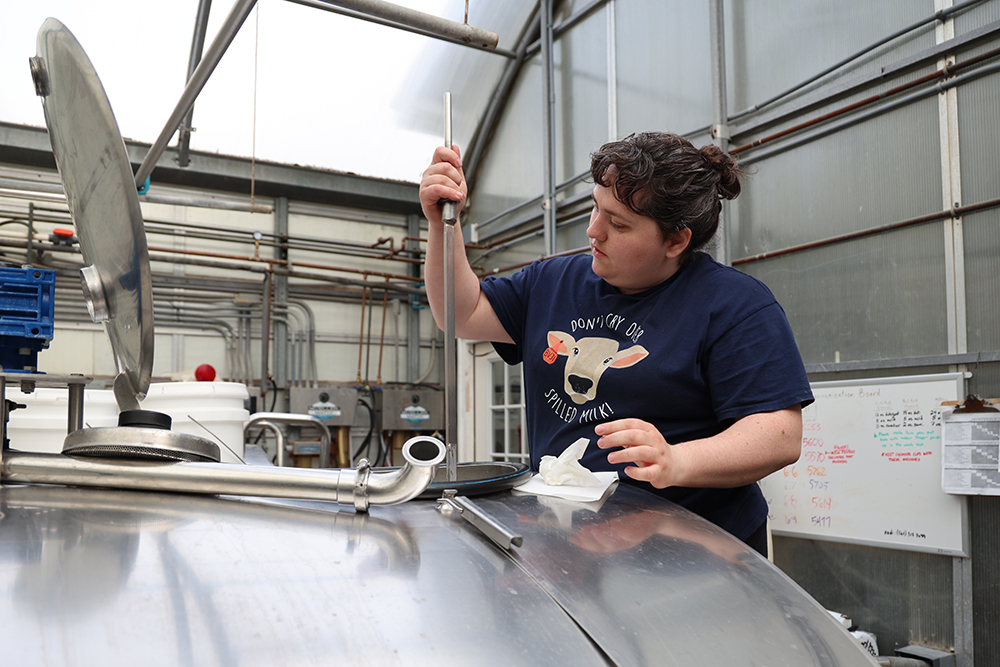
7:15 am Alyssa arrives to haul the milk to our cheesemaking facility. She carefully disassembles, cleans, and reassembles many metal bits and parts to maintain food safety while pumping the milk from the holding tank to the truck’s tank. Today’s haul is 5,174 lbs, which she determines by dipping a metal measuring stick into the holding tank, then consulting a chart to convert that figure. It takes about 10 minutes to empty the tank. “Since I’m not a cheesemaker, this is my connection to the milk,” Alyssa says.
8:24 am After the cows are fed grain in the barn, Megan gators up to the top of the cow lane to let them onto a fresh pasture, where they’ll graze until afternoon milking. Earlier in the morning, Megan applied fresh green paint to the tail ends of several cows. These cows are now under watch for coming into heat. When they do, they’ll be bred to have another calf.
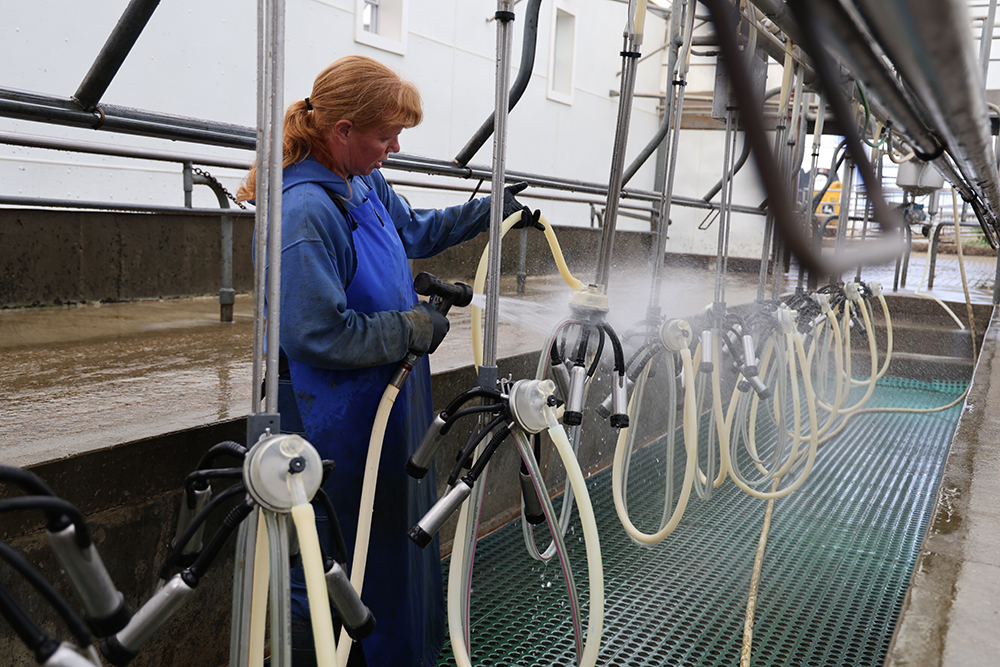
8:41 am Renee wraps up cleaning the parlor so it’ll be set for afternoon milking. The timing is a bit late because the new mom, Averil, was brought down to be milked after all the others. Her colostrum-rich milk will be separated out for the next few days to be fed to her calf. Finally, Renee can break for breakfast.
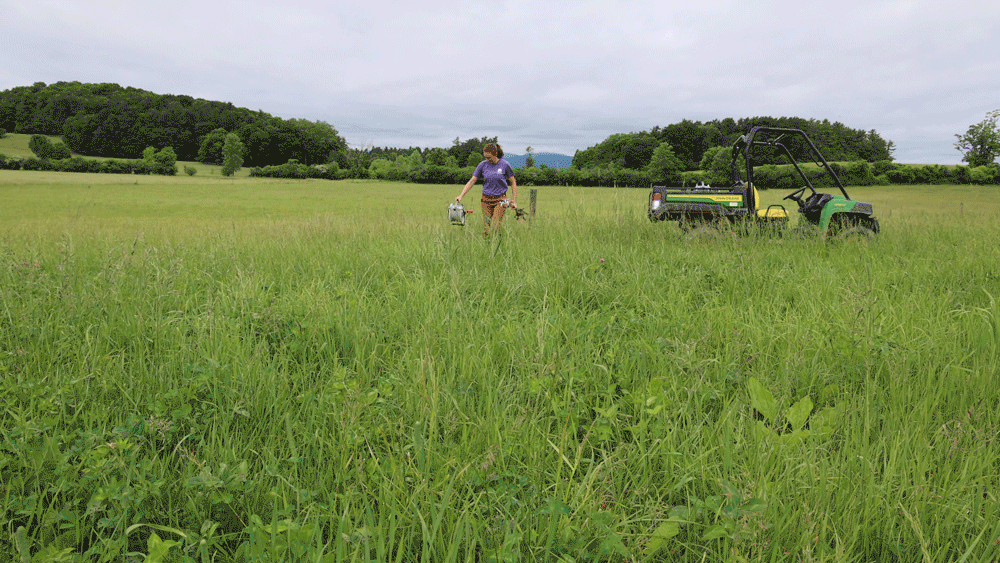
9:34 am Mo has loaded the gator up with several rolls of electric fence and lots of metal stakes to divide “Pasture 50” into seven sections for our rotational grazing system. Students often ask how Mo knows how much pasture to give cows. "Experience," she shrugs. She spools out a line of fence in six separate passes through the field; adding stakes on each return trip. On this cool morning, with views west to the lake and south to the Farm Barn, it’s easy to see why she calls this chore “my favorite thing to do.” “It’s just so peaceful,” she says, “and I love that the cows are going to get great feed.”
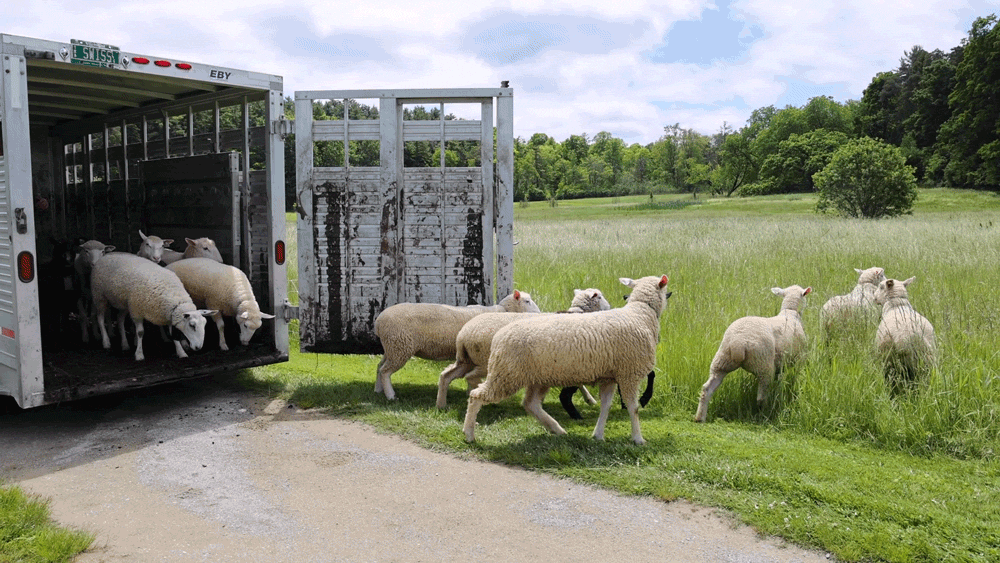
12:30 pm A small flock of “geocollared” sheep are moved to a new pasture. They’re part of a “Nofence” research project of the Agritech Institute. A “Nofence” system allows farmers to track each animal’s movement and keep them all in a defined area without fencing. “The black collars work with satellite imaging to create boundaries for the animals,” explains Renee. “They get a little buzz if they’re on top of the line for too long, and they figure it out pretty quickly.” The pros for farmers: they can update pasture boundaries through a phone app instead of manually moving electric fencing to rotationally graze animals. But, we do need one electric perimeter fence to keep out predators.
2:00 pm Two cows who recently tested pregnant rejoin the “teenage” herd in pasture. These females have a genetic Brown Swiss lineage that the team wants to preserve in the herd, so they were artificially inseminated by Brown Swiss bulls. (We breed other cows with Angus or other stock, then sell their offspring or raise them for meat.) The rowdy, welcoming moos start as soon as the herd sees the trailer nearing the field.
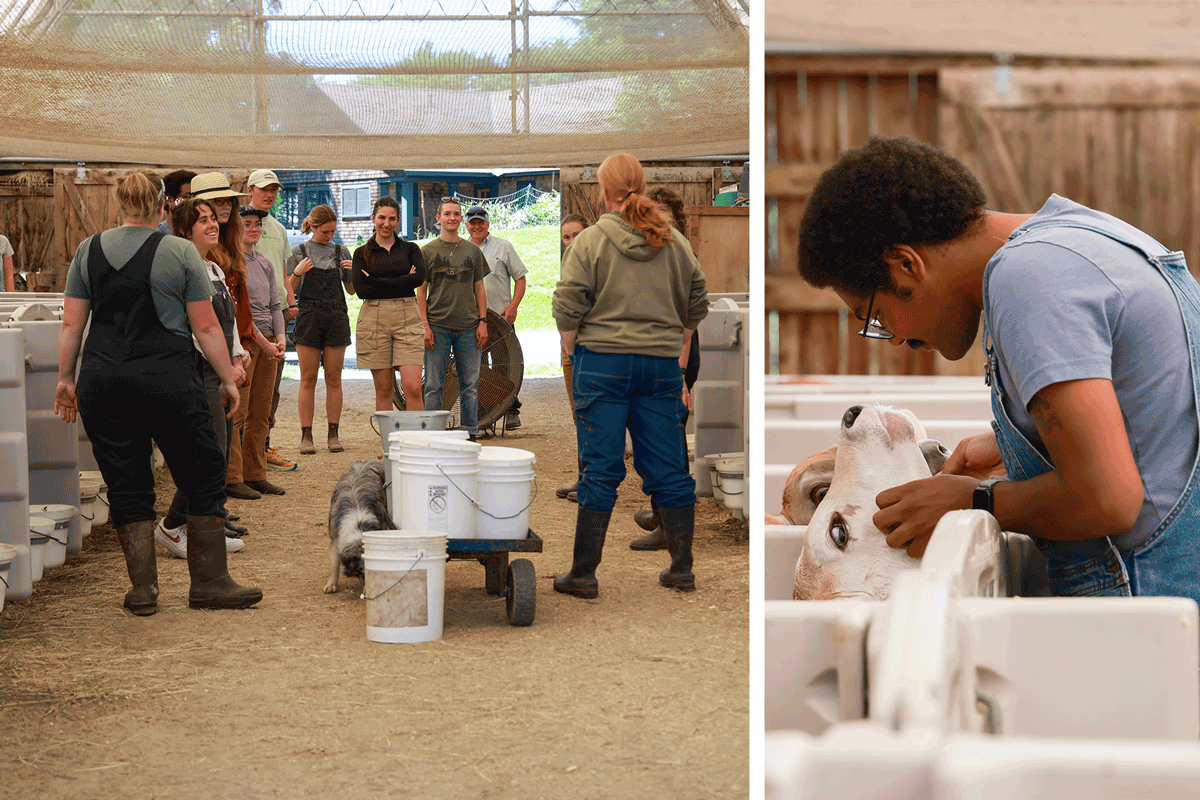
2:30 pm The summer camp counselors, already in training, learn the ins and outs of our working farm. They visit the Dairy to meet the staff (and herd), where they learn about the history of the dairy, land and herd management, and even help out with calf chores (giving the youngest member of the herd feed, water, milk, and new bedding).
4:00 pm Our daily Sun to Cheese Tours connect visitors to the cheesemaking process: from the pastures to the cows, to the milk and cheesemakers. The tour stops at the Dairy just in time for the "cow parade", when the milking herd comes down the lane after a day of grazing for their afternoon milking. The tour group asks Megan and tour guide Dianne questions in the milking parlor, while Mo handles the last milking of the day.
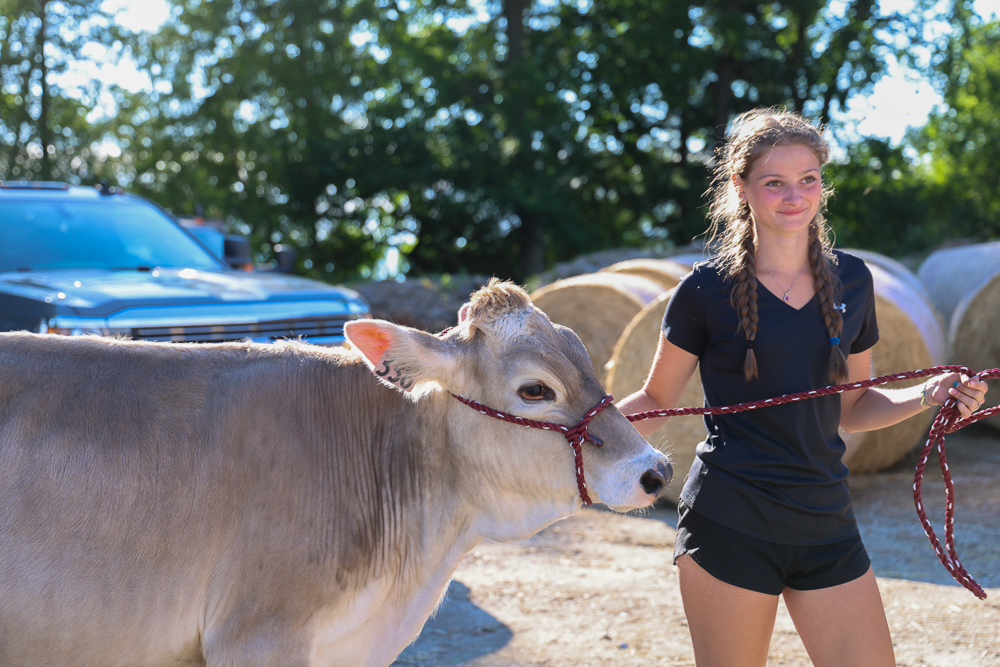
5:49 pm If you’ve ever trained a dog to walk on a leash, you can imagine the patience and care it takes to train an animal as large as a calf to do the same. Getting a cow to walk on a rope lead with their head held high is step one for youth in 4-H. In a little over a month, they’ll each get a chance to show their cows, selected from our herd of Brown Swiss, to a panel of expert judges at the Addison County Fair & Field Days. Renee and Megan stand by as 4-Hers Avery, Noah, and Emma (pictured) each catch and harness their cows and parade them in slow loops around the dairy. Avery, Megan’s daughter, is the only one with a family in farming; Noah and Emma are here because of their love of animals. How do you choose your show cow? “I picked the prettiest one this time,” says Emma, who is in her third year of 4-H. “My first cow, Sassy…let’s just say she lived up to her name.” Emma’s hoping to go into the healthcare field after high school; Noah wants to be a large animal vet.
6:46 pm The last cow leaves the barn for evening pasture, where the herd will spend the night. She lets out a low moo as if to say, “Where did all my friends go?” Renee replies, “Keep walking!”
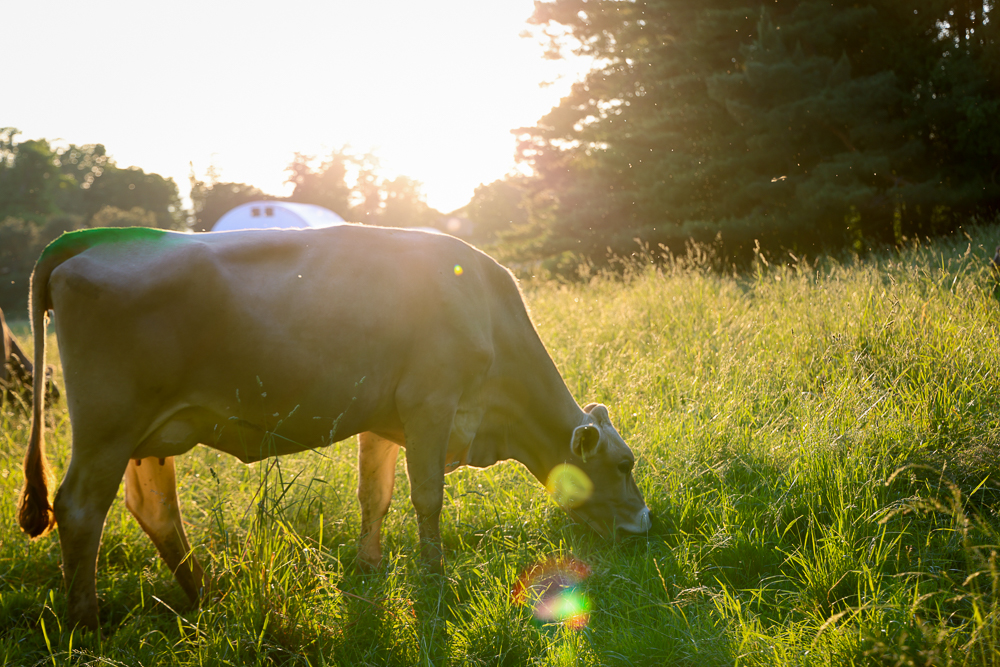
7:57 pm The day draws to an end. Night check is underway—Renee will make sure the milk lines are clean, water buckets are filled, and the doors are closed on the calf barn—while the milking herd enjoys a sunset snack out on pasture.

